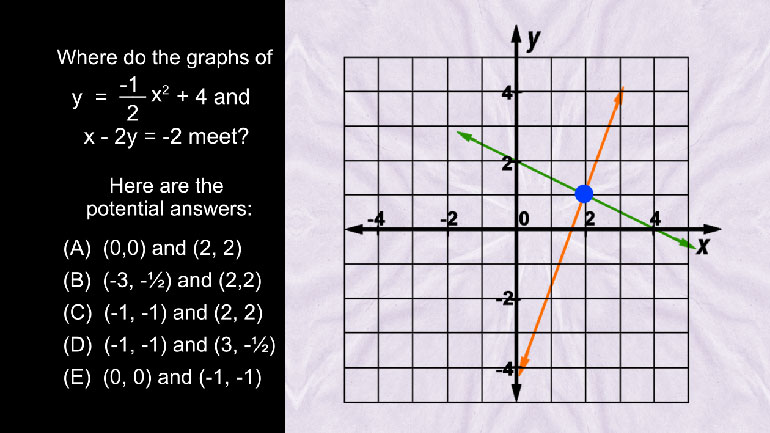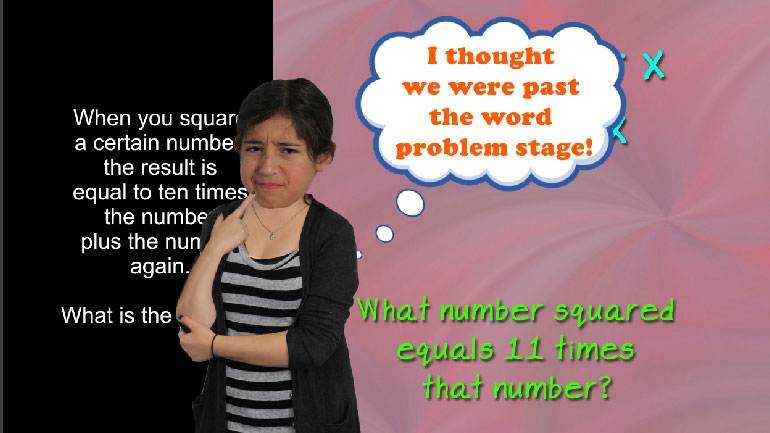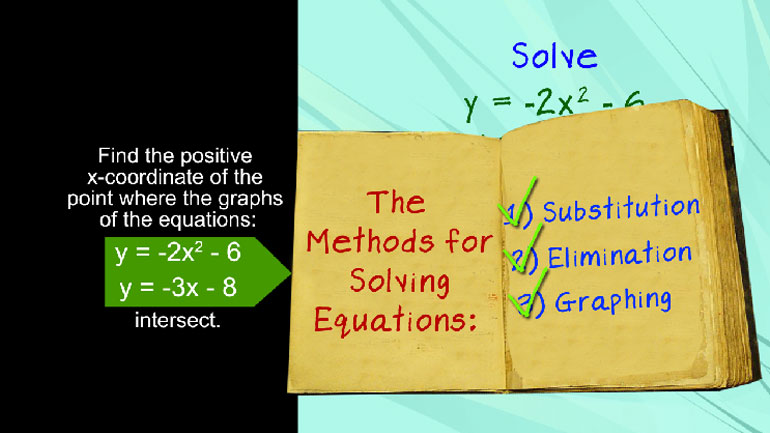ShmoopTube
Where Monty Python meets your 10th grade teacher.
Search Thousands of Shmoop Videos
Solving Quadratic Equations Using the Quadratic Formula 4714 Views
Share It!
Description:
To solve using the quadratic equation, you need to find your a, b, and c values. Once you have that, just plug them into the formula, simplify, and solve. Easy as... the quadratic equation!
Transcript
- 00:03
Solving Quadratic Equations: The Quadratic Formula, a la Shmoop.
- 00:09
Since the Dark Ages, the alchemists of Eureka, Incorporated have been trying as hard as they [Alchemist of Eureka beside a spinning blue ball]
- 00:14
can to turn lead into gold.
- 00:16
They've experimented with every formula known to man: the Empirical formula, the Hardy-Weinberg [Alchemist throws an ornament into a cauldron]
- 00:22
formula, Formula 409.
Full Transcript
- 00:25
Now they will try...
- 00:27
…The Quadratic Formula.
- 00:29
First, they have to uncover this ancient formula, which hasn't been seen by man in thousands [Roll of parchment unfurls to show the quadratic formula]
- 00:33
of years....
- 00:35
Wait, what's that?
- 00:36
It's taught in pretty much every high school math class? [Alchemist looking bemused in a class teaching students about quadratic formula]
- 00:39
This formula reads: x equals negative b plus-or-minus the square root of b-squared
- 00:46
minus four-a-c over two-a.
- 00:51
In order to work their magic, the alchemists have to solve for x in this equation: [quadratic equation filled in to solve for x]
- 00:55
Three-x-squared equals two-x plus five...
- 00:59
First, they need to change the equation into this form: [equation switched into a new form]
- 01:03
a-x squared plus b-x plus c equals zero.
- 01:09
Looks like they're going to subtract two-x and five from both sides, leaving us with...
- 01:14
…three-x-squared minus two-x minus five equals zero.
- 01:18
Now it's time to apply the formula. [girl applying make-up on another girls face]
- 01:21
X equals two plus-or-minus the square root of negative two squared, minus four times
- 01:27
three times negative five, all this over two times three.
- 01:32
This simplifies to two plus or minus the square-root of four plus sixty, over six.
- 01:38
Furthermore, this simplifies to two plus or minus the square-root of sixty-four over six.[quadratic equation formula simplified]
- 01:46
The square-root of sixty-four is eight, and since our equation is plus or minus… [tree roots sprinkled with a magic wand]
- 01:50
We have two equations now,
- 01:53
x equals two plus eight over six
- 01:56
and x equals two minus eight over six.
- 02:00
Two plus eight equals ten, so x equals ten over six, which reduces to five over three.
- 02:07
As for the other one, two minus eight equals negative six.
- 02:11
Negative six over six reduces to negative one.
- 02:15
X equals negative one.
- 02:16
And... that's about it.
- 02:18
They didn't turn lead into gold, but they turned one math problem into two solutions. [Alchemist tosses math formula into a cauldron]
- 02:22
That's something, right?
- 02:23
Still, it's better than that time they tried baby formula. [baby formula thrown into the blue cauldron]
- 02:26
They ended up with more babies than they knew what to do with. [babies appear out of the blue cauldron]




